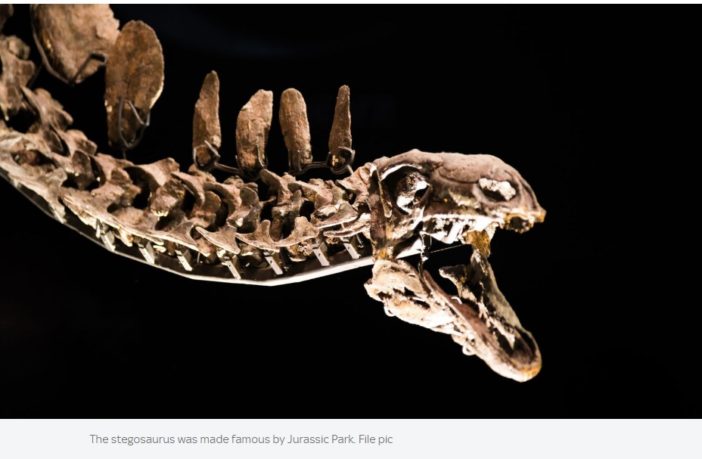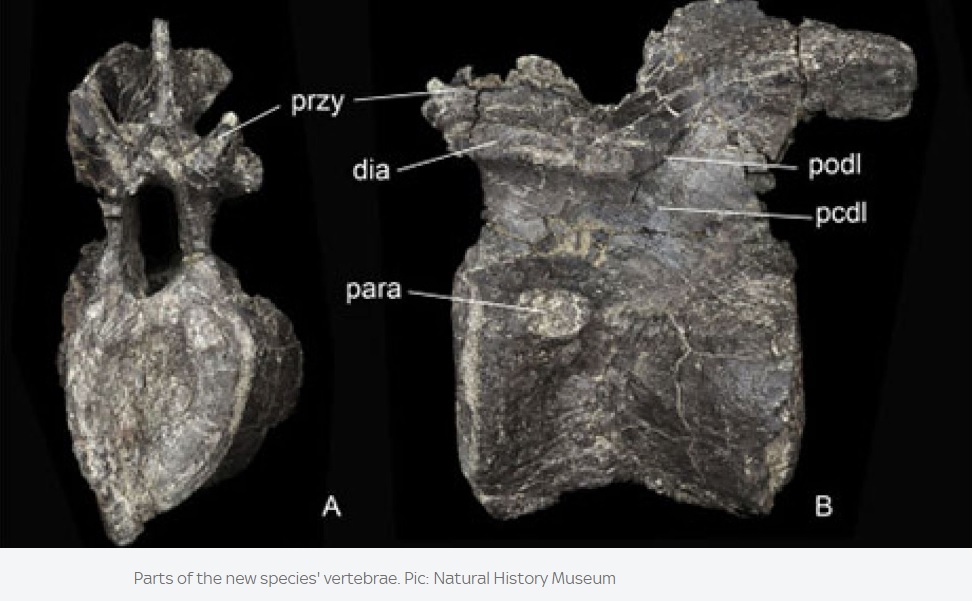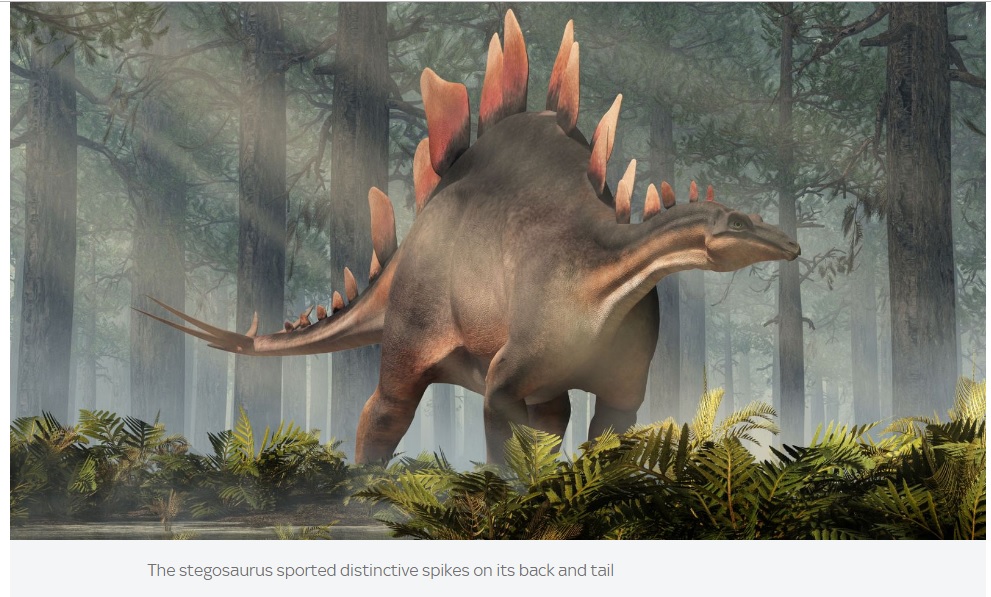Science & Tech News
Sky News
Remains of the recognisable herbivore, which sported spike-like bones protruding from their spine and tails, were in Morocco.
The makers of the next Jurassic Park film could have a new dinosaur to play with after scientists discovered a never-before-seen species of stegosaurus that could also be the oldest of its kind.
Remains of the recognisable herbivore, which sported spike-like bones protruding from their spines and tails, were found in the Middle Atlas Mountains of Morocco by a team of British researchers.
They brought the fossils back to the Natural History Museum for study and believe they belong to a new variant of the stegosaurus that walked the earth around 168 million years ago – during the middle of the Jurassic period.
It has been named adratiklit boulahfa, meaning “mountain lizard” in the North African Berber language, with boulahfa a reference to the mountainous area in which it was found.
Team leader Dr Susannah Maidment said the discovery was “particularly exciting” because of how old the fossils were, adding: “Most known stegosaurus date from far later in the Jurassic period, making this the oldest definite stegosaurus described and helping to increase our understanding of the evolution of this group of dinosaurs.”
As well as being the oldest, adratiklit boulahfa is also the first stegosaurus to be found in North Africa.
Until now, they were thought to be more common in regions that previously made up the super-continent Laurasia, which is believed to have broken up into North America, Greenland, Europe and most of Asia.
But the new discovery suggests they may also have roamed Gondwana, the other super-continent from the era.
Dr Maidment added: “Most stegosaurus we know of, including the Natural History Museum’s Sophie, the most complete stegosaurus discovered, have been found in Laurasian rock formations.
“This, however, may not mean that stegosaurus were not so common in Gondwana and in fact may be due to the fact that Gondwana rock formations have been subject to far fewer excavations and detailed studies.”
Dr Maidment and her team spared no expense during their work in Morocco and now believe that other areas so far not excavated could also be home to such fossils.
Further discoveries in the region will provide an improved view of the distribution of this group of dinosaurs and could eventually result in a more complete specimen of Adratiklit boulahfa, the team said.
Their impressive find came as researchers in the US said an ancient increase in oxygen levels helped North American dinosaurs to flourish.
Using a new technique for measuring levels of gas in early rocks, they found that the amount of the gas leapt by nearly a third in a couple of million years, possibly setting the scene for the Chindesaurus and Sauropods to expand into the tropics of North America and elsewhere.
Chindesaurus was an upright carnivorous dinosaur, around 2m long and nearly 1m high, and mostly found in America, while the Sauropods were the largest land animals ever.
The findings, uncovered by Professor Morgan Scaller and his team from the Rensselaer Polytechnic Institute, New York, were presented at the Goldschmidt Geochemistry conference in Barcelona.











